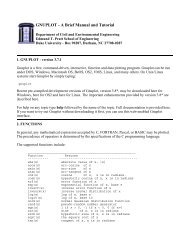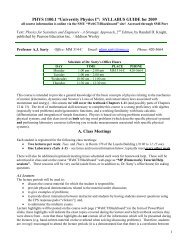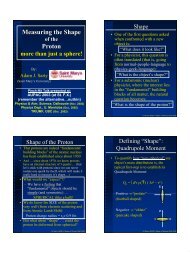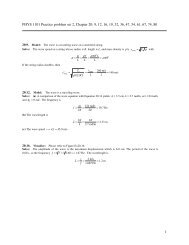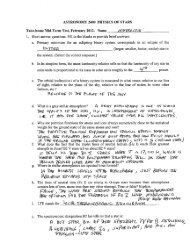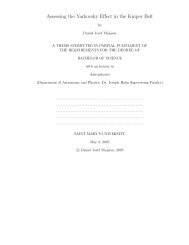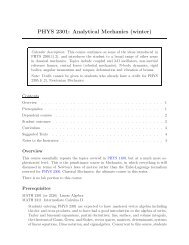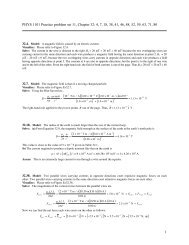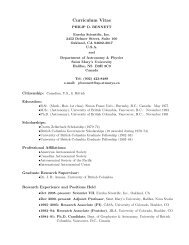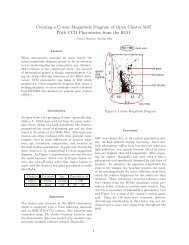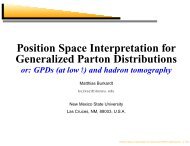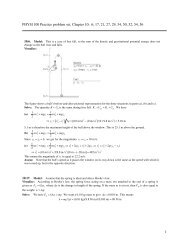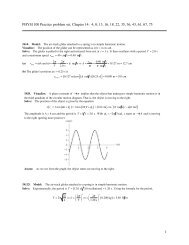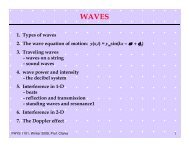PHYS 1101: University Physics II (winter)
PHYS 1101: University Physics II (winter)
PHYS 1101: University Physics II (winter)
You also want an ePaper? Increase the reach of your titles
YUMPU automatically turns print PDFs into web optimized ePapers that Google loves.
<strong>University</strong> <strong>Physics</strong> <strong>II</strong> 3<br />
and the magnetisation of matter.<br />
<strong>PHYS</strong> 3350 Thermal <strong>Physics</strong> (indirectly)<br />
Since <strong>PHYS</strong> 3350 is cycled with <strong>PHYS</strong> 3400 (Electrodynamics), it is possible students<br />
won’t take <strong>PHYS</strong> 3400 until the last semester of their fourth year. Yet, <strong>PHYS</strong> 3400 is<br />
the first time they see thermodynamics formally since the three-week unit given in this<br />
course. Thus, a solid foundation in the first and second laws are critical, as are the ideas<br />
of phase-space (P-V, T-S) diagrams, state variables, and the kinetic theory of gases. All<br />
of these ideas will be revisited and developed further in the first half of <strong>PHYS</strong> 3400, with<br />
the second half devoted to Statistical Mechanics.<br />
Student Outcomes<br />
The development of sound, systematic problem-solving skills is paramount, and will serve<br />
both our students and freshmen engineers (the vast majority of the class) well in any future<br />
physics classes they take.<br />
Students completing <strong>PHYS</strong> <strong>1101</strong> should begin to develop the following skills:<br />
1. gain a competency in units and unit conversions<br />
2. accept different notation conventions<br />
3. develop a systematic and consistent approach to problem solving (e.g., p-V diagrams,<br />
Gaussian surfaces), and learn to translate word problems into mathematical equations.<br />
Many students will cling to their “rules of thumb” and simplistic approaches learned in<br />
high school that don’t work for the more complex problems encountered in this course,<br />
particularly in the E&M unit.<br />
4. be able to visualise a problem and use diagrams effectively<br />
5. apply differential calculus to physics problems<br />
6. learn to conceptualise physics and recalibrate their intuition<br />
Typical problems students completing <strong>PHYS</strong> <strong>1101</strong> should be able to solve:<br />
1. From the sinusoidal representation of a wave or oscillation, determine the period, frequency,<br />
wavelength, amplitude, velocity, etc.<br />
2. Find the amount of useful work that can be extracted from a gas in a system executing<br />
a clockwise rectangular loop on a T-S diagram.<br />
3. What is the capacitance of an isolated charged sphere<br />
4. What is the force on a dielectric slab that is only partially between two charged plates<br />
5. How is a “mag-lev train” propelled



